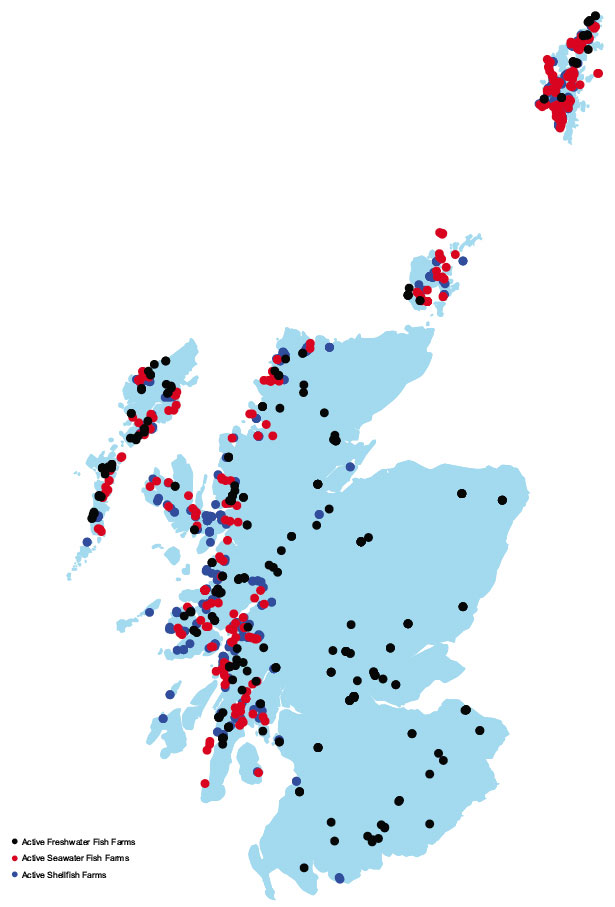A Fresh Start: The renewed Strategic Framework for Scottish Aquaculture
A Fresh Start: The renewed strategic framework for scottish aquaculture
THE IMPORTANCE OF AQUACULTURE
Aquaculture is a nationally important industry for Scotland, in particular the west coast and the islands where many communities depend on the employment and revenue it provides. Scotland is the largest producer of farmed Atlantic salmon in the EU, producing about 130,000 tonnes annually, 1 with an estimated farm gate value of £324 million. 4
Although farmed salmon dominates in Scotland, aquaculture is about much more. Scotland produces about 7,500 tonnes of rainbow trout - worth about £14 million. 4 Brown trout, sea trout, halibut and Arctic charr are also farmed in Scotland. 1
Scotland has a successful shellfish farming sector, producing over 5,000 tonnes a year - mainly common mussels and Pacific oysters. Smaller amounts of native oysters as well as queen and king scallops are also farmed. This has a total first sale value of over £5 million. 2 There is an increasing appetite for Scottish shellfish and therefore real potential for this sector to grow to meet that demand.
Farmed salmon supports 1195 1 direct jobs in salmon production and a significant number of jobs in salmon processing (3733 3 full-time, part time and seasonal in 2008). Production of trout and other finfish supports an additional 247 1 jobs with another 292 3 jobs in processing. Shellfish production supports 398 2 jobs.
Active Fish and Shellfish Farms in Scotland - March 2009

There are 448 registered active finfish sites and 335 registered active shellfish sites in Scotland (Marine Scotland Science, April 2009).
There is a problem
Thanks for your feedback